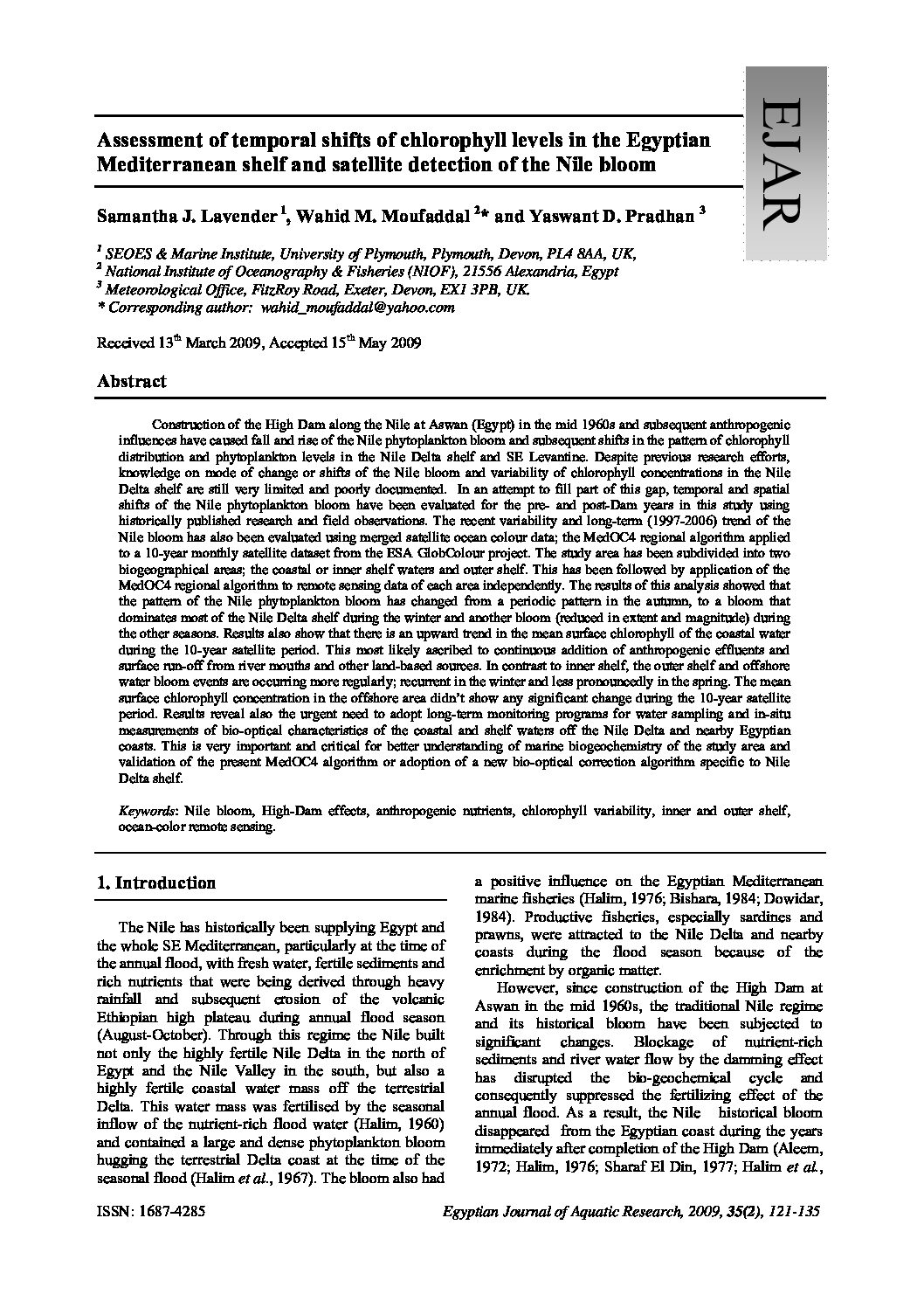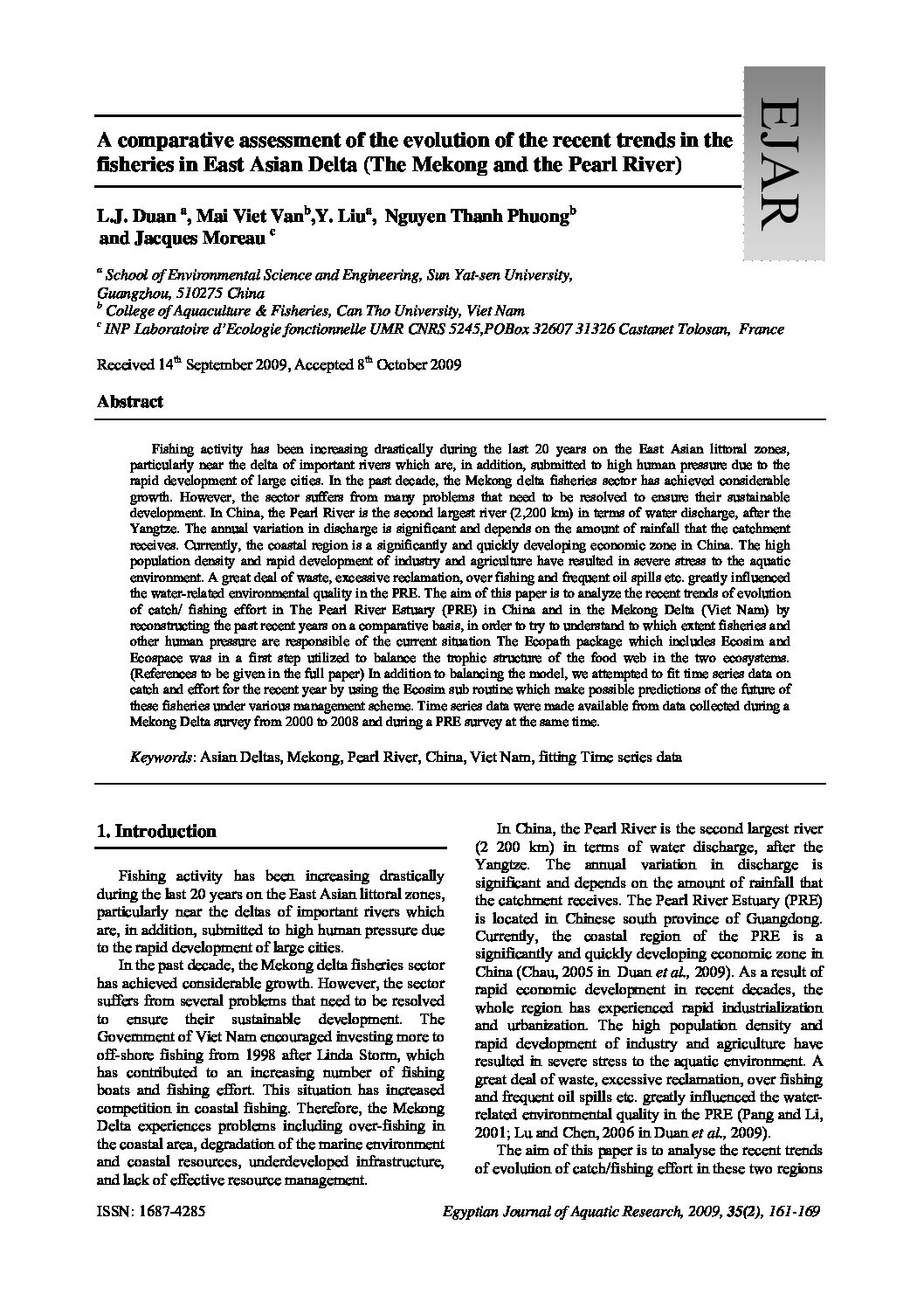Categories
vol-35Assessment of temporal shifts of chlorophyll levels in the Egyptian
Mediterranean shelf and satellite detection of the Nile bloom
Samantha J. Lavender 1, Wahid M. Moufaddal 2
* and Yaswant D. Pradhan 3
1
SEOES & Marine Institute, University of Plymouth, Plymouth, Devon, PL4 8AA, UK,
2
National Institute of Oceanography & Fisheries (NIOF), 21556 Alexandria, Egypt
3
Meteorological Office, FitzRoy Road, Exeter, Devon, EX1 3PB, UK.
* Corresponding author: [email protected]
Received 13th March 2009, Accepted 15th May 2009
Abstract
Construction of the High Dam along the Nile at Aswan (Egypt) in the mid 1960s and subsequent anthropogenic
influences have caused fall and rise of the Nile phytoplankton bloom and subsequent shifts in the pattern of chlorophyll
distribution and phytoplankton levels in the Nile Delta shelf and SE Levantine. Despite previous research efforts,
knowledge on mode of change or shifts of the Nile bloom and variability of chlorophyll concentrations in the Nile
Delta shelf are still very limited and poorly documented. In an attempt to fill part of this gap, temporal and spatial
shifts of the Nile phytoplankton bloom have been evaluated for the pre- and post-Dam years in this study using
historically published research and field observations. The recent variability and long-term (1997-2006) trend of the
Nile bloom has also been evaluated using merged satellite ocean colour data; the MedOC4 regional algorithm applied
to a 10-year monthly satellite dataset from the ESA GlobColour project. The study area has been subdivided into two
biogeographical areas; the coastal or inner shelf waters and outer shelf. This has been followed by application of the
MedOC4 regional algorithm to remote sensing data of each area independently. The results of this analysis showed that
the pattern of the Nile phytoplankton bloom has changed from a periodic pattern in the autumn, to a bloom that
dominates most of the Nile Delta shelf during the winter and another bloom (reduced in extent and magnitude) during
the other seasons. Results also show that there is an upward trend in the mean surface chlorophyll of the coastal water
during the 10-year satellite period. This most likely ascribed to continuous addition of anthropogenic effluents and
surface run-off from river mouths and other land-based sources. In contrast to inner shelf, the outer shelf and offshore
water bloom events are occurring more regularly; recurrent in the winter and less pronouncedly in the spring. The mean
surface chlorophyll concentration in the offshore area didn’t show any significant change during the 10-year satellite
period. Results reveal also the urgent need to adopt long-term monitoring programs for water sampling and in-situ
measurements of bio-optical characteristics of the coastal and shelf waters off the Nile Delta and nearby Egyptian
coasts. This is very important and critical for better understanding of marine biogeochemistry of the study area and
validation of the present MedOC4 algorithm or adoption of a new bio-optical correction algorithm specific to Nile
Delta shelf.
Keywords: Nile bloom, High-Dam effects, anthropogenic nutrients, chlorophyll variability, inner and outer shelf,
ocean-color remote sensing.







